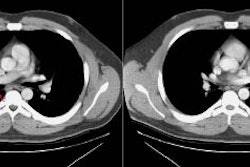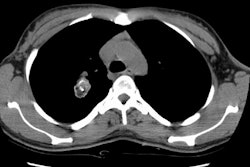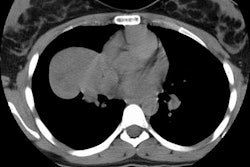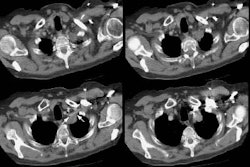Large cell neuroendocrine carcinoma (LCNEC)
Clinical:
LCNEC is a poorly differentiated high-grade neuroendocrine tumor that is morphologically between atypical carcinoid and small cell lung cancer [1]. Patients are typically about 60 years of age and the tumor is more common in men (2.5:1) [1]. More than 60% of affected patients are smokers [1]. The prognosis is poor with a 5 year survival between 13-45% [1]. On histologic analysis the tumors have a high mitotic rate (more than 10 mitoses per HPF) and contain ares of necrosis (often large zones) [1].
X-ray:
The lesion appears as a pulmonary mass and can have smooth or spiculated margins [1]. Calcification are found in about 9% of lesions [1]. Pleural effusion can be found in up to 24% of cases [1].
The lesion is FDG avid on PET imaging [1,2].
REFERENCES:
(1) Radiographics 2006; Chong S, et al. Neuroendocrine tumors of the lung: clinical, pathologic, and imaging findings. 26: 41-58
(2) AJR 2007; Chong S, et al. Integrated PET/CT of pulmonary neuroendocrine tumors: diagnostic and prognostic implications. 188: 1223-1231



